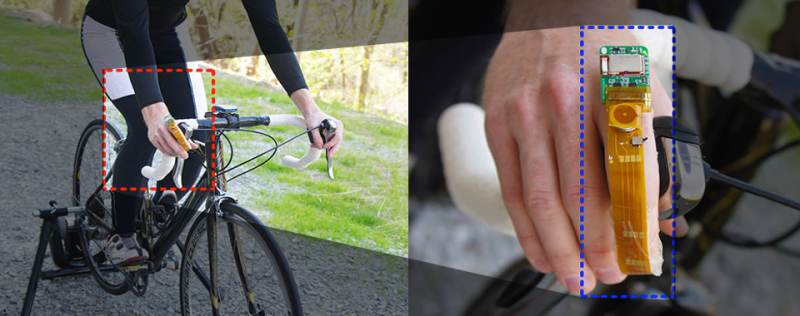Breakthrough soft electronics fabrication method is a first step to DIY smart tattoos

Imagine if your electronic wearable device, like your Fitbit, adhered to you like a sticker or temporary tattoo and could read your pulse or measure hand gestures. As electronics are becoming thinner, lighter, and more power efficient, they can be populated on stickers and temporary tattoos to create soft wearables that adhere to the skin. And the most exciting news is that one day you may be able to print these wearable electronics from a home printer.
Carnegie Mellon University's Mechanical Engineering Professor Carmel Majidi, Ph.D. student Eric Markvicka, and previous postdoctoral fellow Michael Bartlett (now a professor at Iowa State University) have created a method to print skin-mountable electronics in a quick and cost-effective way.
"One of the remaining challenges in skin-mounted electronics is to interface soft circuits with the rigid microchips and electronics hardware required for sensing, digital processing, and power," said Majidi. "We address this with a breakthrough digital fabrication technique that enables efficient creation of wireless electronics on a soft, water-resistant, medical-grade adhesive."
Electronics produced from this method contain rigid components that you typically see on a circuit board (such as transistors, microprocessors, and power regulators) with soft deformable wiring that stretches and bends.
The method uses commercially available films to create wearable electronics through rapid prototyping and assembly techniques. Using a combination of laser cutting with alignment control, they create individual layers and assemble them through a soft transfer printing technique.
Majidi and his team created a fully functional "data skin" in under an hour. Since the method is based on inexpensive processing tools and materials, the circuits can be produced for less than a dollar.
When wrapped around the fingertip, a "data skin" embedded with an optical pulse oximetry chip can measure heart rate and blood oxygenation, or can bond to the back of the hand to monitor hand gestures. After use, the "data skin" can be painlessly peeled from the skin and discarded.
Because the production is fast and inexpensive, users can create their own highly customizable wearable data skins. This is a big step toward fabrication of customized wearables by non-experts.
"This new and versatile method to print skin-mountable electronics represents a first step towards a fully automated method in which non-experts can create their own customized wearables," said Majidi. "No longer limited to smartphones and smartwatches, the next generation of personal electronics will be soft, stretchable, and stick to skin or clothing. Moreover, they can be produced at home with an inexpensive printer not unlike a desktop laserjet."
The paper, titled "Rapid Fabrication of Soft, Multilayered Electronics for Wearable Bio-Monitoring", by Michael Bartlett; Eric Markvicka; Carmel Majidi, was published on September 14, 2016 in Advanced Functional Materials.
More information: Michael D. Bartlett et al. Rapid Fabrication of Soft, Multilayered Electronics for Wearable Biomonitoring, Advanced Functional Materials (2016). DOI: 10.1002/adfm.201602733
Journal information: Advanced Functional Materials





















